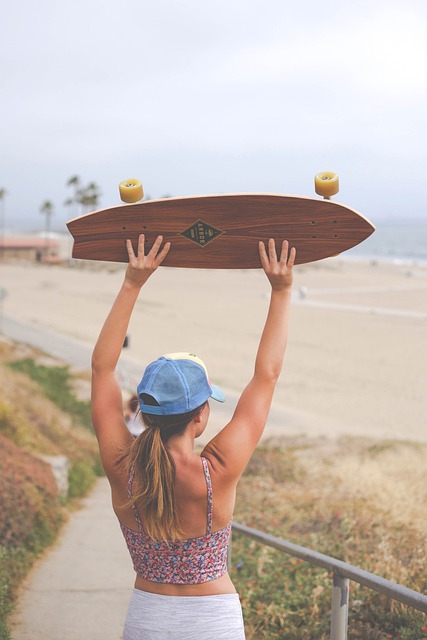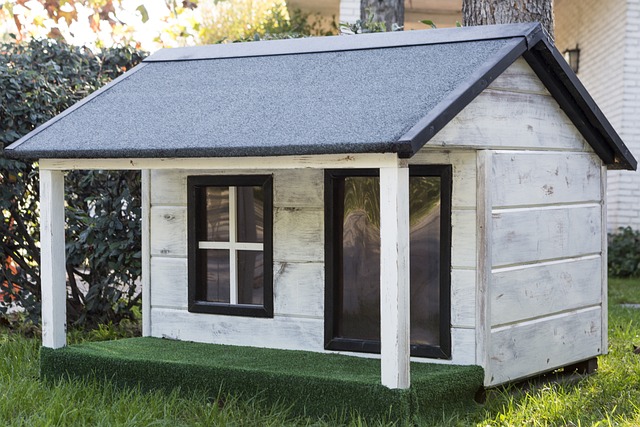Longboarding is an exciting sport that offers both thrill and skill development. For beginners, it's crucial to start with a longboard designed for newcomers, featuring stability and forgiveness with larger wheels and a spacious deck. Safety is paramount, requiring essential gear such as a high-quality helmet, knee pads, elbow pads, wrist guards, and skate shoes with good grip. Beginners should focus on mastering basic skills like proper foot placement, weight distribution, and turning techniques. Practice in safe, open environments helps build confidence and allows for gradual progression to steeper inclines and more challenging terrains. Joining a longboarding community provides invaluable guidance, accelerates learning, and fosters a supportive atmosphere that is essential for both safety and skill enhancement. As you refine your abilities and gain experience, longboarding becomes a fulfilling and rewarding adventure for all levels of riders.
Embarking on the longboard journey can be an exhilarating and rewarding experience, offering a unique blend of sport and recreation. Whether you’re drawn to the smooth glide over pavement or the challenge of mastering new skills, understanding the fundamentals is key for beginners in longboarding. This comprehensive guide will walk you through selecting the right longboard, mastering balance, and ensuring safety. From essential gear to navigating different terrains, we’ve got you covered. Join us as we delve into the world of Longboards for beginners, where every turn and trick brings a new adventure.
Understanding Longboards: A Beginner's Guide to Longboarding

Embarking on the longboarding journey can be an exhilarating experience, and selecting a longboard tailored for beginners is crucial to your success. A longboard designed for novices typically features a more stable deck, softer wheels for grip, and bearings that ensure smooth navigation. These features help riders build confidence as they become accustomed to the longer wheelbase and wider stance that longboards offer. To start, it’s beneficial to familiarize yourself with the components of your longboard, including the trucks, wheels, deck, and bearings. Understanding how each part functions will allow you to make adjustments to suit different terrains and riding styles as you progress. Practice on flat ground to gain balance and learn to push effectively before attempting more advanced maneuvers or riding in traffic. Safety gear like helmets, knee pads, and elbow pads are essential to protect against falls and abrasions. As you grow more comfortable on your longboard, you can explore different longboarding disciplines, such as downhill racing, freeriding, or dancing, each with its unique techniques and skills to master. Remember to approach these progressively, ensuring each new challenge is within your comfort zone to ensure a safe and enjoyable experience. With the right mindset and equipment, longboarding can be a rewarding hobby that offers both a physical workout and mental relaxation.
Choosing the Right Longboard for Beginners: Key Considerations

When embarking on the journey of longboarding, selecting the right board is paramount for beginners to ensure a smooth learning curve and a safe experience. A longboard for beginners should offer stability, ease of use, and be designed with the novice rider in mind. The deck’s width and length contribute significantly to stability; opt for a wider platform to provide more space for foot placement and enhance balance. Additionally, consider a drop-through or top-mount configuration for a responsive ride that’s not overly aggressive. These setups offer a gentler ride, which is perfect for beginners who are still developing their skills and confidence.
Wheels and trucks are other critical components to examine when choosing your first longboard. Softer wheels, typically in the 70a to 80a durometer range, are more forgiving on rough surfaces and offer better grip. They can handle a variety of terrains without compromising ride quality. The size of the wheel also matters; larger wheels (60mm to 80mm) are generally preferable as they roll over obstacles with greater ease and maintain speed longer. Trucks should have a hanger width of around 150mm to 270mm, which is suitable for most riders. They should provide enough leverage for turning while being robust enough to handle the inevitable bumps and falls that come with learning. Remember to consider your body weight and riding style when making these choices to ensure a harmonious setup that complements your physique and intended use.
Mastering the Basics: Stance, Balance, and Safety Tips for New Riders

For novice riders, mastering the basics is crucial for a safe and enjoyable experience with longboarding. A solid foundation in stance and balance is essential to developing proficiency and confidence on a longboard for beginners. The most recommended stance for new riders is the front foot forward position, where one foot is placed slightly ahead of the other, just behind the truck, allowing for better control and maneuverability. This stance also facilitates easier weight shifting, which is key to maintaining balance while in motion. It’s important to keep your knees slightly bent and to distribute your body weight evenly between both feet. Balance improves with practice; start by placing one foot flat on the board, with the other foot perched lightly on top of the front truck, and gradually increase your speed as you become more comfortable.
Safety should always be a priority when longboarding, especially for beginners. Investing in protective gear such as a helmet, knee pads, elbow pads, and wrist guards can significantly reduce the risk of injury. Additionally, learning to fall safely is an important aspect of longboarding for beginners. Practice falling by rolling into a roll alongside the board rather than over it; this helps protect your wrists and arms. Always choose a clear, flat path with few obstacles for your initial rides. Be mindful of your surroundings, ride at a speed that allows you to react to changes in your environment, and never attempt tricks or stunts until you have a firm grasp of the basics and feel confident in your ability to control the board. With the right stance, balance, and safety precautions, the longboard for beginners becomes an extension of the rider, offering a smooth and exhilarating experience on two wheels.
Essential Gear: Protective Equipment Every Beginner Should Have

For those embarking on their longboarding journey, having the right protective gear is paramount to ensure a safe and enjoyable experience. A high-quality helmet is non-negotiable; it’s the first line of defense against impacts and abrasions. Helmets designed for skateboarding or cycling are ideal, offering both head protection and a wide field of view. Alongside the helmet, knee pads and elbow pads are great for beginners as they cushion falls and absorb the impact of slides, preventing injuries to joints that are particularly susceptible to damage. Wrist guards further complement this protective setup by safeguarding against sprains and fractures, which are common among novices.
In addition to these essential items, longboarders should also invest in properly fitted skate shoes with good grip to maintain control over the board. Gloves can be a wise addition for those who wish to prevent road rash or bruises on their hands during falls. Reflective gear and a brightly colored longboard can enhance visibility on the road, making it crucial for beginners to navigate traffic safely. It’s also recommended to have a basic toolkit for simple maintenance tasks like tightening bolts or replacing wheels, ensuring your longboard for beginners remains in optimal condition for each ride. Remember to choose gear that fits well and is comfortable during extended use, as this will encourage consistent wear and maximize safety while mastering the basics of longboarding.
The First Rides: Starting Off on Your Longboard Journey

Embarking on a longboard journey as a beginner can be an exhilarating experience, offering a unique blend of skateboarding and surfing on wheels. The initial rides are pivotal in shaping your skills and confidence on a longboard. To ensure a smooth start, it’s crucial to select a longboard for beginners that is stable and forgiving. Models with larger wheels and a longer deck tend to provide better balance and control, which are essential for newcomers to the sport. As you navigate your first rides, focus on mastering the basics: proper foot placement, weight distribution, and learning to lean and turn effectively. Practicing in an open, flat area with minimal traffic and obstacles will help you gain comfort and control without overwhelming sensory input. Remember to wear protective gear, including a helmet, knee pads, and elbow pads, to safeguard against falls and abrasions. Each ride is an opportunity to refine your skills, from toe-side turns to heel-side transitions, all of which are integral parts of longboarding technique. As you progress, the longboard for beginners that served as your starting point may evolve into a more performance-oriented deck, but the satisfaction of learning and growing with your board will last far beyond the initial rides. Embrace the journey, celebrate each milestone, and let the joy of longboarding be your guiding path forward.
Learning Tricks and Techniques for Enhanced Control and Confidence

For those embarking on their longboarding journey, mastering tricks and techniques is key to gaining enhanced control and confidence on the board. A pivotal aspect of starting with a longboard for beginners is understanding the fundamentals of balance and steering. Beginners can enhance their stability by practicing basic foot placement and weight distribution exercises. As they become more comfortable, introducing turning and stopping techniques will further their control. Learning to lean into turns allows the rider to navigate obstacles and changes in terrain with greater ease. Similarly, effective braking methods are essential for safely slowing down or coming to a halt.
Advancing beyond these basics, intermediate longboarding tricks like carving—a smooth, drawn-out turn that mimics a surfing motion—can be integrated into the rider’s repertoire. Carving not only adds flair to the ride but also improves the rider’s understanding of how the board responds to different pressures and angles. Another technique that builds confidence is the manual, which involves lifting the front wheels while maintaining speed, giving riders a sense of the longboard’s dynamics under their feet. As these skills are perfected, beginners will find themselves more adept at handling their longboards with precision and poise, transforming initial tentativeness into assuredness on their longboard for beginners.
Navigating Different Terrains: From Flat Ground to Hills

When embarking on a longboarding journey as a beginner, navigating different terrains is an essential skill to develop for a rich and varied riding experience. Initially, it’s best to familiarize yourself with maneuvering on flat ground to build confidence and control. This foundational skill allows you to get comfortable with the board’s responsiveness and your body’s movements, which are crucial for progression. As proficiency grows, transitioning to inclines is a natural next step. Hills present a new challenge, as maintaining speed and balance becomes more dynamic. To tackle hills effectively with a longboard for beginners, one must consider the gradient and surface texture; these factors influence how much to lean and how aggressively to push off. For gentle slopes, a relaxed stance with weight evenly distributed is usually sufficient. On steeper gradients, leaning forward and applying pressure with your back foot can help maintain control and speed. It’s important to practice these skills gradually to ensure safety and master the art of weight distribution and edge control, which are key elements in longboarding for beginners. By starting with flat ground and progressively challenging yourself with different hill slopes, you’ll develop the skills necessary to confidently navigate a variety of terrains on your longboard.
Joining the Community: How Social Groups Can Elevate Your Experience

Embarking on the journey of longboarding can be an exhilarating experience, especially for beginners who are navigating the balance between thrill and skill. Joining a community of fellow enthusiasts is not just beneficial; it’s a boon for your longboarding progression. Within these social groups, you’ll find a wealth of shared knowledge and experiences that can accelerate your learning curve. From tips on selecting the right longboard for beginners to advice on mastering the basics, the collective wisdom of an experienced community can be invaluable. Moreover, engaging with others who share your passion fosters camaraderie, motivation, and the opportunity to practice together. This collective support not only enriches your experience but also enhances safety as you learn new techniques and explore different terrains. As a beginner longboarder, integrating into a community can provide you with a tailwind that propels your skills forward, ensuring a smoother and more enjoyable ride. Sharing the road with others who are equally enthusiastic about the sport creates a dynamic environment where learning is both fun and infectious. It’s in these moments, whether it’s the shared laughter after a wipeout or the quiet nod of encouragement as you nail a trick for the first time, that the community truly elevates your longboarding experience.
